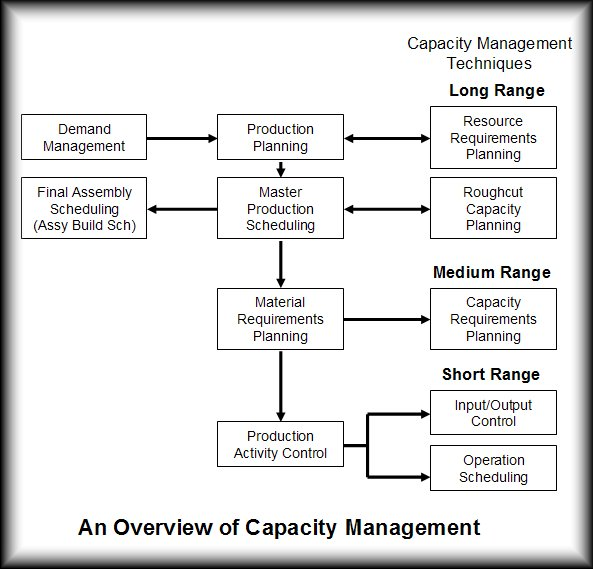Rough-cut capacity planning

A problem commonly encountered in operating MRP systems is the existence of an overstated MPS. An overstated master production schedule is one that orders more production to be released than production can complete.
An overstated MPS causes raw materials and WIP inventories to increase because more materials are purchased and released to the shop than are completed and shipped.
It also causes a buildup of queues on the shop floor. Since jobs have to wait to be processed, actual lead times increase, causing ship dates to be missed. As lead times increase, forecast accuracy over the lead-time diminishes because forecasts are more accurate for shorter periods than for longer ones. Thus, overstated master production schedules lead to missed due dates and other problems. Validating the MPS with respect to capacity is an extremely important step in MRP.
This validation exercise has been termed rough cut capacity planning (RCCP).
Rough-cut capacity planning checks whether critical resources are available to support the preliminary master production schedules. Critical resources include bottleneck operations, labor and critical materials. Here the resource bill is for a single product. As before, the only interest is in bottleneck work centers and critical resources.
Basically there are three approaches to perform rough cut capacity planning. These can be summarized as follows;
a) Capacity planning using overall factors (CPOF) :
It is the least detailed approach. Capacity requirement is quickly computed but is insensitive to shifts in product mix.
b) “Bill of labor” (or bill of required types of machine hours) approach :
It involves multiplying two matrices, “the bill of labor” and the “master production schedule”. This approach picks up shifts in product mix, but does not consider lead time offsets. It strictly assumes a lot-for-lot policy for setting lot sizes. When other techniques, such as economic order quantity etc is used, then this approach gives a very rough estimate.
c) “Resource Profile” approach :
It is exactly same as “Bill of labor approach”, except that it takes lead-time offsets into account. Again, it strictly assumes a lot-for-lot policy for setting lot sizes as in the case of “bill of labor approach”.